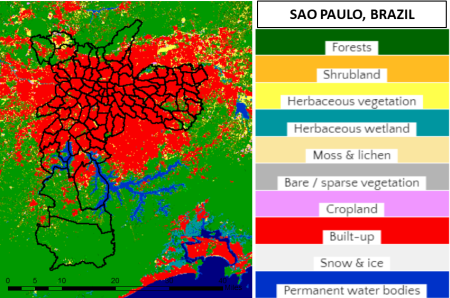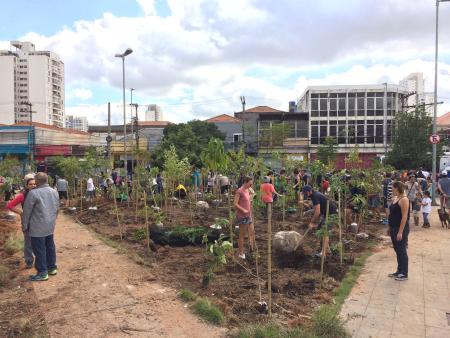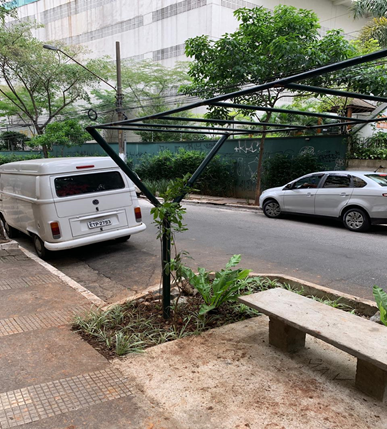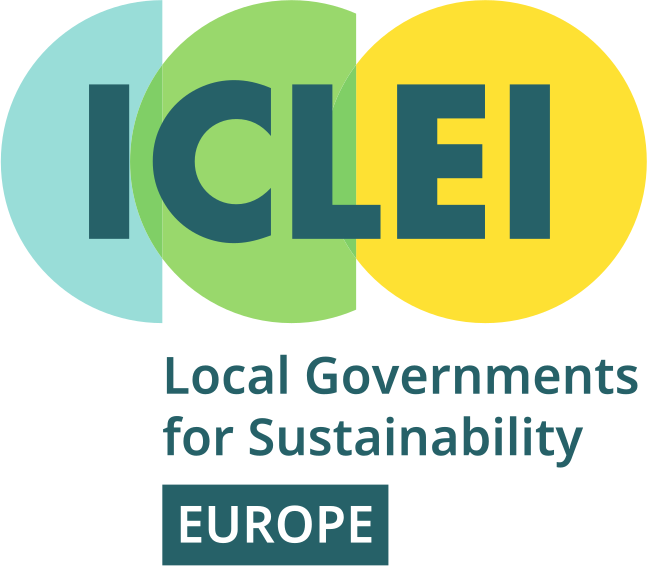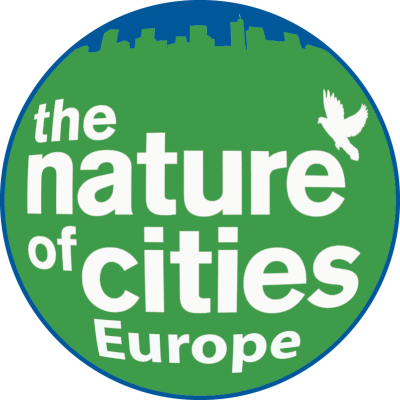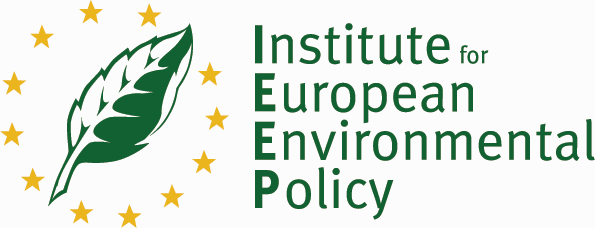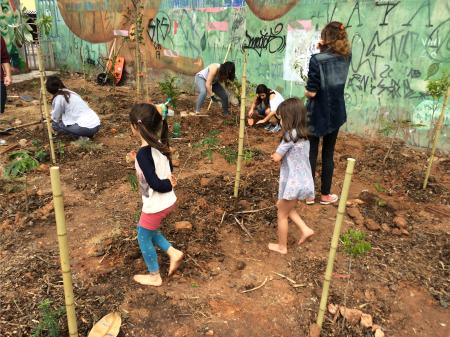
Area characterisation:
São Paulo was a small village by the end of the 19th century. This village used to lie on top of the hills, surrounded by an exuberant Atlantic Rainforest and savannah, locally known as Cerrado. However, this natural landscape shifted significantly ever since, with the fast expansion of the city, mainly after the second half of the 20th century. The development of the city occurred at the expense of the natural environment, with a significant loss of biodiversity, and the addition of alien species to the city. Out of the more the 3,000 tree species from the Atlantic Rainforest, a world hotspot of biodiversity, only 577 are currently found in the city although, they must coexist and compete with an additional 185 exotic species. Most of these exotic species, introduced by projects of landscape design in public spaces and private properties. There is, however, a recent growing trend of reintroducing and restoring to some extent the ecosystems that were previously found in the area occupied by the city today.
Objective:
Developing a planting scheme with the support of the local engaged population. The creation of national institutions and laws that gave the support for the local activism focused on natural areas. In São Paulo, different groups are working to increase the biodiversity and tree cover in the city by planting small forest patches, locally known as pocket forests. These activities are first planned with the local stakeholders, and then the area is prepared for planting, including the eventual removal of pavement, preparation of the soil, among other measures. The act of planting per se is undertaken by the local population and engaged people from various parts of the city that gather for this activity.
Images
Potential impacts/benefits:
In the last century, São Paulo has had been an increased in mean temperature of more than 3˚C, which is about 5 to 6 fold higher than that observed in the Southern Hemisphere. Warming had also created profound changes such as extreme rainfall events that leads to more flood problems. Pioneer species grow faster and provide shade and micro-environmental conditions required for the development of early and late secondary tree species. Dense planting schemes such as those used by activists not only favor the development of the specimens, but also promote pollination and seed dispersal, protection of the soil against lixiviation, and consistent reduction in the mortality of young individuals.
These interventions, among many others in the city, lean towards a more sustainable city. Many environmental and social benefits have been reported in these areas, they included:
- Improve water quality
- Increase well-being
- Increase amount of green open spaces for residents
- Increase accessibility to green open spaces
- Social inclusion
- Social learning about location & importance of NbS
- Increase Biodiversity
- Increase achievements of biodiversity targets
- Greater ecological connectivity across urban regenerated sites
- Reduce run-off
- Increase infiltration / Water storage
It is clear, therefore, that these interventions meet the criteria of multi-functionality expected for any NbS intervention. As new forests are planted and green corridors are formed, it is expected that these benefits will spread throughout the city reducing the evident environmental inequality currently found in the city of São Paulo.
Actions:
Several areas of the city have received NbS interventions related to the planting scheme, including squares, parks, and even abandoned open areas. We present threes examples of these interventions:
- The restoration of a small forest patch in Batatas Square, the west region of the city of São Paulo. The local responsible authorities gave the authorisation for the intervention in an area of 650 m2 previously occupied by an abandoned gas station. All tanks were removed, the soil was remediated, and the area was revitalized by removing pavement and waste and planting several species from the Atlantic Rainforest and Cerrado, including the development of a rain garden capable of collecting water from an equivalent 1,000 m2 of paved area, with a significant contribution to the control of local floods. Most of the work in this area was conducted by volunteers of all ages that were invited through social media.
- The Homero Silva Square, a 12,000 m2 green area also located in the west region of São Paulo. The restoration processes undertaken in this area were mainly focused on the protection of eight springs that flows to the Tietê river, one of the largest in the city. The project consisted of the restoration of biodiversity using elements of the Cerrado and Mata Atlântica, including aquatic species from the wet physiognomy of these biomes.
The rain gardens that are multiplying from the central areas of the city to the most outlier neighborhoods, taking advantage of parking spaces, remnants of the street grid leftovers, and other spaces that had been covered in asphalt or cement without any reliable ecosystem service for the urban environment. Besides its humble origins, these interventions can be both officials, from public services agencies to deep root actions originated from dwellers own initiative, taken mostly without any support.
Transferability of result:
The examples of interventions whose success depend thoroughly on the combination of government support, vision, and planning from organized activists with a large experience in the field and the engagement of many volunteers who aspire to live in a more sustainable city. São Paulo has significant local biodiversity. However, nowadays it is still not clear to what extent these species survive in the city and promote the best of the ecosystem services, considering that the environmental conditions changed significantly after urbanisation. So, it is necessary to understand how these tree native species will perform growing under these adverse environmental conditions. On the other hand, planting is still not coordinated under a systemic evaluation of the city. These are local interventions that are not necessarily thought to integrate with other local and regional green infrastructure, which may jeopardize the potential ecosystem services that they may provide for the entire city. Therefore, it is still necessary to create mechanisms capable of integrating these different variables to produce the best benefit to the city and its citizens.
Lessons learnt:
The initiatives presented here show how it is possible to slowly restore the biodiversity in the city by creating small interventions that will eventually integrate across the city.
- These interventions in the west region of the city are especially successful examples NbS for combining the restoration of the flora and the protection of the water, either by preserving springs, or by creating rain gardens for a more effective water percolation in the soil.
- Interventions increase the environmental quality in the city while promoting more social interactions and cohesion in different parts of the city. A sense of place-keeping is therefore created and shared among all those involved in these projects, and those that locally benefit from them.
- They represent are strategies that start to break the traditional mindset to dry out all the available open space in the cities, allowing for the implementation of a more comprehensive plan for a Green Infrastructure in the cities.
Organisations:
Prefeitura Municipal do Rio de Janeiro: https://prefeitura.rio
Universidade Federal do Rio de Janeiro: https://ufrj.br/en/
Client:
São Paulo city
Design team:
Local activism and national institutions
Contacts:
Giuliano Maselli Locosselli
Institute of Botany and University of São Paulo
São Paulo, Brazil
NBS goals:
- Enhancing sustainable urbanization
- Restoring ecosystems and their functions
- Developing climate change mitigation
- Urban regeneration through nature-based solutions
- Nature-based solutions for improving well-being in urban areas
- Multi-functional nature-based watershed management and ecosystem restoration
NBS benefits:
- Developing climate change mitigation
- Restoring ecosystems and their functions
- Enhancing sustainable urbanisation
Publications and reports:
Amaya-Espinel J.D, Hernández-Garcia J. & Cruz-Suárez M.A. 2021. State of the art, good practices and NbS typology in European Union and Latin America cities. Report D2.1 v1.1. European Union’s Horizon 2020 research and innovation programme under grant agreement no. 867564 tinyurl.com/conexus-project.

